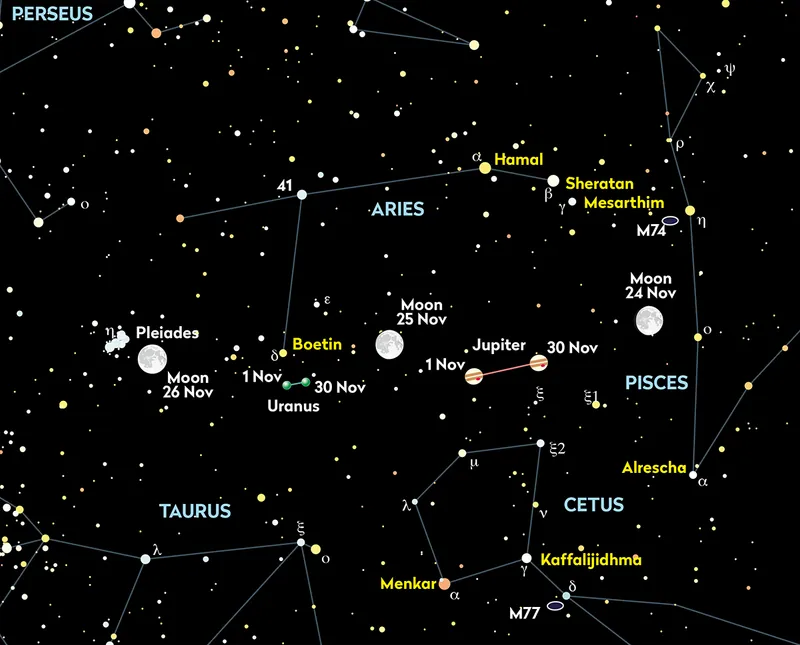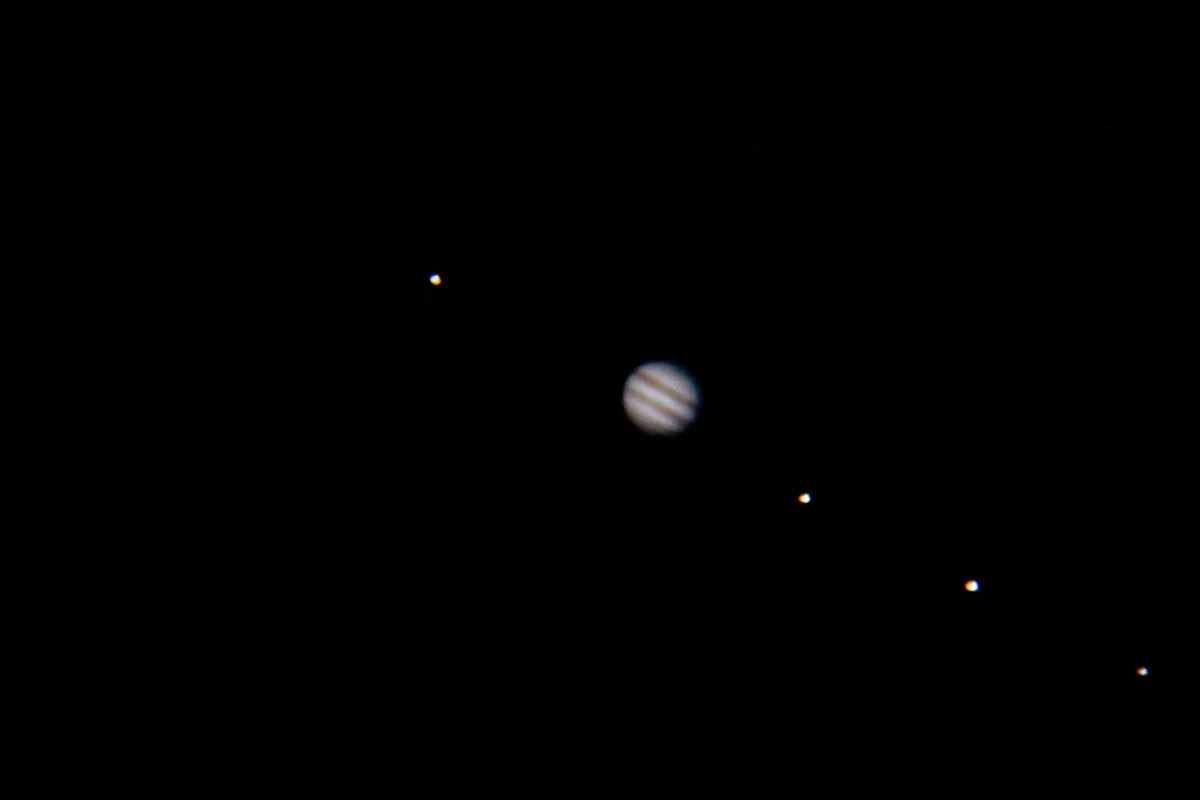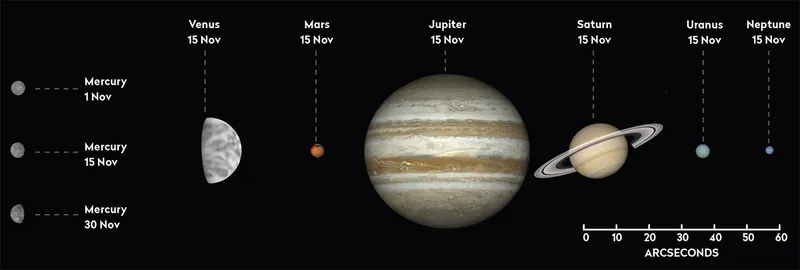Magnificent Jupiter reaches opposition on 3 November 2023 and is currently a dominant night-time planet.
Shining at mag. –2.8 at the start of the month, it dims only marginally to –2.7 by the end of November.
Jupiter reaches a peak altitude of around 50° when due south and manages this under dark-sky conditions all month.
For more advice, read our guide on how to observe Jupiter through a telescope.

This puts it in an extremely favourable place for observing through the eyepiece or imaging with a camera, as the planet will be above the turbulent atmosphere found closer to the horizon.
A bright, almost full Moon (also at opposition) sits near Jupiter on the evenings of 24 and 25 November.
For more observing guides, sign up to receive the BBC Sky at Night Magazine e-newsletter and listen to our weekly Star Diary podcast.
Observing Jupiter at opposition
Jupiter has much to offer through small and large telescopes, particularly at opposition.
A small telescope will show its oblate nature, a consequence of it being a large gaseous body that rotates once in just under 10 hours.
This causes its equatorial regions to bulge outward.
Jupiter also has a complex atmosphere, a 100mm telescope showing the two main bands and, under good conditions, the Great Red Spot.
Its four brightest moons - known as the Galilean moons - are easy to spot through any size of telescope.
For help spotting them in November, read our guide on how to see Jupiter's moons.

Larger scopes will reveal greater detail in Jupiter’s atmosphere at opposition.
The Great Red Spot becomes a lot easier to see with bigger aperture, along with more of the minor bands and zones.
Irregularities in the atmosphere are fascinating to record and track over time.
Applications such as the freeware WinJupos can be used for image measurement, as well as providing timings for the visibility of the Great Red Spot and the positions of the planet’s four Galilean moons.
WinJupos also has many useful tools to assist with image processing.
How to see the planets, November 2023

Jupiter
- Best time to see: 3 November, from 00:00 UT
- Altitude: 51°
- Location: Aries
- Direction: South
- Features: Complex atmosphere, Galilean moons
- Recommended equipment: 75mm or larger
Mercury
- Best time to see: 30 November, 40 minutes after sunset
- Altitude: 1° (extremely low)
- Location: Sagittarius
- Direction: Southwest
Mercury is an evening planet but despite being brightest at the start of the month, it is poorly positioned during November and sets relatively soon after the Sun. On 21 November, for example, shining at mag. –0.4 and separated from the Sun by nearly 18°, Mercury sets less than 40 minutes after sunset.
This does increase to around 1 hour by the end of November and the planet manages to maintain a similar brightness throughout this period.
Venus
- Best time to see: 1 November, from 05:00 UT
- Altitude: 21°
- Location: Leo
- Direction: East-southeast
Venus is a morning object visible against astronomically dark skies for a good length of time throughout November. On 1 November, the planet shows as a 54%-lit gibbous disc through the eyepiece and appears 22 arcseconds across. It shines at mag. –4.2 on this date, rising nearly 4.5 hours before the Sun.
On 30 November, its phase will have increased to 67% and its apparent diameter reduced to 17 arcseconds. On the 30th, mag. –4.1 Venus will rise 4.2 hours before the Sun. The waning crescent Moon occults Venus during the morning of 9 November.
Mars
Mars is not a viable target in November 2023 as it’s too close to the Sun in the evening sky. Solar conjunction is on 17 November, after which Mars becomes a morning object.
Saturn
- Best time to see: 1 November, 19:40 UT
- Altitude: 24°
- Location: Aquarius
- Direction: South
Saturn is a mag. +0.8 evening planet during November, able to reach its highest position, due south, under fairly dark-sky conditions all month.
Currently in Aquarius, not far from mag. +4.3 Iota (ι) Aquarii, the planet manages to reach an altitude around 24° up when due south as seen from the centre of the UK. The first quarter Moon sits 3.5° southeast of Saturn on the evening of 20 November.
Uranus
- Best time to see: 13 November, 23:55 UT
- Altitude: 55°
- Location: Aries
- Direction: South
Uranus is presented optimally this month, the planet reaching opposition on 13 November when it can be found near the Aries–Taurus border, shining at mag. +5.6. Look for it 2.2° south of mag. +4.3 Botein (Delta (δ) Arietis).
Neptune
- Best time to see: 1 November, 21:13 UT
- Altitude: 34°
- Location: Pisces
- Direction: South
Neptune is an evening planet, favourably placed all month. It’s able to reach a peak altitude of 34° under dark-sky conditions throughout November. Shining at mag. +7.9, a minimum of binoculars is required to see it.
